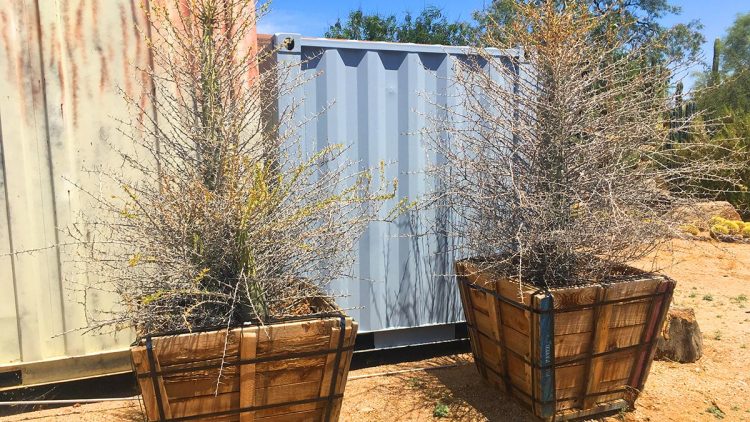What Planting Zone is Phoenix, AZ
Phoenix, Arizona is primarily in USDA Plant Hardiness Zone 9b, with some parts falling into Zone 10a depending on elevation and urban heat effects.
🌱 What This Means for Planting:
-
Zone 9b:
-
Avg. annual minimum temperature: 25°F to 30°F
-
Most of Phoenix is in this zone.
-
-
Zone 10a (warmer microclimates):
-
Avg. annual minimum temperature: 30°F to 35°F
-
Found in central/urban Phoenix or south of the city.
-
🌼 What You Can Grow in Zone 9b/10a:
✅ Fruit & Citrus Trees:
-
Lemons, limes, oranges, figs, pomegranates, dates
✅ Vegetables:
-
Fall/Winter: Lettuce, broccoli, carrots, peas
-
Spring/Summer: Melons, okra, eggplant, peppers
✅ Herbs:
-
Basil, oregano, thyme, rosemary, mint
✅ Ornamentals & Trees:
-
Bougainvillea, lantana, Texas sage, palo verde, mesquite
🗓️ Planting Calendar Tip:
Because of Phoenix’s desert climate, fall and early spring are the best times to plant — avoid mid-summer plantings unless you’re using shade cloth and drip irrigation.
Here’s a Phoenix-Specific Planting Calendar for USDA Zone 9b/10a, plus a list of drought-tolerant plants that thrive in your desert climate.
🌵 PHOENIX PLANTING CALENDAR (Zone 9b/10a)
🥬 Cool-Season Crops (Plant: October–February)
-
Lettuce
-
Kale
-
Spinach
-
Broccoli
-
Carrots
-
Beets
-
Onions
-
Garlic
-
Peas
-
Radishes
🌟 Tip: Best germination in October–November. Use row covers in Dec–Jan if frost hits.
🍅 Warm-Season Crops (Plant: Mid-February–April)
-
Tomatoes (start indoors in Jan, transplant in Feb/March)
-
Peppers
-
Eggplant
-
Squash (zucchini, crookneck)
-
Melons (cantaloupe, watermelon)
-
Beans (green beans, black-eyed peas)
-
Corn
-
Cucumbers
🌡️ Note: Shade cloth helps protect tender starts from late spring heat.
🌞 Hot-Season Crops (Plant: July–August)
For monsoon planting (heat-loving crops that can germinate fast in warm soil):
-
Okra
-
Cowpeas
-
Armenian cucumbers
-
Sweet potatoes
-
Malabar spinach
🍋 Fruits & Citrus (Plant Trees: Fall or Spring)
-
Citrus: Lemon, orange, lime, grapefruit (plant Feb–April or Oct–Nov)
-
Pomegranate (best planted fall to early spring)
-
Fig
-
Jujube
-
Olive
-
Date palm (needs space and heat)
🌼 DROUGHT-TOLERANT LANDSCAPE PLANTS FOR PHOENIX
🌺 Flowering Shrubs & Perennials
-
Lantana – colorful, attracts butterflies
-
Texas Ranger (Leucophyllum frutescens) – purple blooms after monsoons
-
Desert Ruellia – purple flowers, low water
-
Red Bird of Paradise – bright orange-red flowers
-
Chuparosa – hummingbird favorite, red tubular flowers
🌳 Trees
-
Palo Verde (AZ state tree) – yellow blooms, low water
-
Desert Willow – fast-growing, trumpet flowers
-
Mesquite (Native types) – shade provider, deep-rooted
-
Ironwood – beautiful lavender flowers in spring
🌵 Succulents & Cacti
-
Agave
-
Aloe Vera
-
Ocotillo
-
Barrel Cactus
-
Golden Torch Cactus
🌿 Groundcovers & Grasses
-
Damianita – yellow flowers, compact
-
Desert Marigold – bright and fast-spreading
-
Deer Grass (Muhlenbergia rigens) – native, ornamental
-
Trailing Rosemary – fragrant, edible, heat-tolerant
Here’s a Phoenix-Specific Drip Irrigation Schedule tailored to Zone 9b/10a, factoring in the desert climate, plant type, and season. This guide helps you water efficiently using drip emitters while avoiding overwatering or plant stress.
💧 PHOENIX DRIP IRRIGATION SCHEDULE
(For native & desert-adapted plants and non-natives)
🌡️ General Guidelines by Season
| Season | Frequency | Depth of Watering |
|---|---|---|
| Winter (Dec–Feb) | Every 14–30 days | Deep soak (18–24″) |
| Spring (Mar–May) | Every 7–14 days | Deep soak (18–24″) |
| Summer (Jun–Sept) | Every 3–7 days (native) Every 2–3 days (non-native) |
Deep soak (18–24″) |
| Fall (Oct–Nov) | Every 7–14 days | Deep soak (18–24″) |
Note: Native plants tolerate longer gaps. Adjust for soil type: sandy = more frequent, clay = less frequent.
🪴 By Plant Type (Drip Irrigation System)
🌳 Trees (Desert & Non-Desert)
-
Emitters: 2–4 emitters, 2–4 GPH
-
Watering zone: Near dripline (not trunk)
-
Schedule:
-
Summer: Every 7–10 days
-
Winter: Every 21–30 days
-
🌿 Shrubs
-
Emitters: 1–2 emitters, 1–2 GPH
-
Schedule:
-
Summer: Every 5–7 days
-
Winter: Every 14–30 days
-
🌼 Groundcovers / Perennials / Flowers
-
Emitters: 1 emitter, 0.5–1 GPH
-
Schedule:
-
Summer: Every 3–5 days
-
Winter: Every 10–14 days
-
🍋 Citrus & Fruit Trees
-
Emitters: 4+ emitters, 2–4 GPH
-
Schedule:
-
Summer: Every 7 days (long soak ~2 hours)
-
Winter: Every 14–21 days
-
🌵 Cacti & Succulents
-
Emitters: 1 emitter, low flow (0.5 GPH)
-
Schedule:
-
Summer: Every 21–30 days
-
Winter: Rarely if at all
-
🔁 How Long to Run Your System?
Calculate Time:
Time (minutes)=(Gallons NeededFlow Rate (GPH))×60\text{Time (minutes)} = \left( \frac{\text{Gallons Needed}}{\text{Flow Rate (GPH)}} \right) \times 60
Example:
A shrub needs 4 gallons
You have 2 emitters @ 1 GPH
42=2 hours (120 minutes)\frac{4}{2} = 2 \text{ hours (120 minutes)}
🧠 SMART TIPS
-
✅ Use a soil probe (or screwdriver): If it goes in easily 6–10″, you’re watered enough.
-
✅ Always water at night or early morning to reduce evaporation.
-
✅ Add mulch around emitters to keep soil moist longer.
-
✅ Check for emitter clogs monthly — mineral buildup is common in Phoenix.
Desert Landscaping in Phoenix
Desert Foothills Gardens Nursery, Inc. has been Phoenix’s source for design, plan selection, and maintenance since 1985. We have a team of experts that help with the overall plan for your desert landscape that includes plant selection, design, irrigation, and water management strategies. If you are interested in seeing how Desert Foothills Gardens Nursery, Inc. could provide a low maintenance and low water use landscape at your home or business either stop our nursery at 33840 N. Cave Creek Rd. in Cave Creek or give us a call at 480-488-9455.


